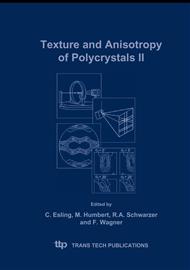p.3
p.15
p.23
p.29
p.37
p.43
p.49
p.55
p.61
Texture in Hot Extruded, Hot Rolled and Laser Welded Magnesium Base Alloys
Abstract:
In this work the textures of MgAl9Zn1, MgAl6Zn1, MgAl3Zn1 and MgAl2Mn alloys have been studied, using individual grain orientation measurement (“ACOM”) in the SEM. Hot extruded billets, unidirectional, reverse and cross-rolled sheet metals as well as laser welding seams have been investigated. In the shaft of a partial extrudate through a circular die orifice, a <0001> ring fiber texture has formed which continuously changes into a spiral fiber texture in the bottom neck. The unidirectional and the reverse hot rolled MgAl2Mn specimens show an R type <0001> texture with a small asymmetrical split whereby the basal poles are tilted by about ±12° from the sheet normal direction to the rolling direction. In the hot cross rolled specimens, the basal poles are slightly spread both in the first and second rolling directions. Texture in the laser welding seams is weak and distinctly different from that of the sheet material. There is almost no heat affected zone at the margins of the welding seams.
Info:
Periodical:
Pages:
23-28
Citation:
Online since:
July 2005
Authors:
Price:
Сopyright:
© 2005 Trans Tech Publications Ltd. All Rights Reserved
Share:
Citation:


